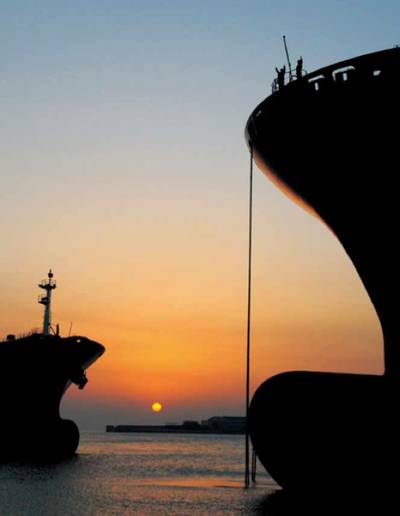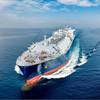Comparison Offers Clues on Container Ship Operation Profitability
The container industry is a notoriously difficult sector to make any money in, but a few major lines have managed to avoid the red ink while others have toiled. Drewry Maritime Equity Research compares the performances of Asian companies OOIL and NOL for clues behind the varying results and the future direction that the most successful are likely to head. Excerpts follow:
The last five years have been a stormy period for the global container shipping industry and have affected all big and small players alike. The industry’s boom period of 2003-2008 saw low debt, ample liquidity and healthy balance sheets. That now seems a distant memory as the last few years and in particular 2011-13 saw the industry’s profitability suffer negative cash flows straining industry balance sheets and debt-to-equity ratios spiralling out of control.
Drewry estimates that the industry has collectively made an operating loss of around $2.5 billion in the past three years with the last couple only providing a tiny profit. The outlook for 2014 is not much better. Within those aggregate results are considerable gaps between the best and worst performing lines.
Two closely matched companies that have experienced contrasting results are Singapore-based NOL, parent of APL, and Hong Kong’s OOIL, owners of OOCL. NOL has been part of the struggling club for much of the past half-decade whereas OOIL has managed to keep its financial health in much better condition and managed to ride the cycle better than most.
Our analysis suggests the difference in costs between the two is the prime differentiator which translates into higher yields for the former and poor returns for the latter.
It pays to have costs on your side
Yield maximization and cost optimization go hand in hand. Even as most carriers focus on cost optimization while planning their operations, there is a significant cost difference at play amongst different vessel operators that leads to different results. OOIL’s container arm, OOCL has a low cost base which has helped it post industry leading margins over the previous years.
Compared to this, NOL’s liner division has had a rigid cost structure, in part a legacy of company’s acquisition of APL, forcing the company to post consecutive losses. Our analysis suggests the difference in costs between the two is the prime differentiator which translates into higher yields for the former and poor returns for the latter.
A healthy balance sheet slashes financial risk and lowers steady debt service outflows
During this period, NOL has seen its balance sheet strained rapidly with net gearing increasing from a meagre 11.7% at the start of 2011 to ~182% by end-2013.
OOIL astutely shielded itself from the burden of high loan repayments with a well-timed asset sale. The company sold its property business at an opportune time in 2010, helping to buffer its cash balances and wither the low cycle environment comfortably.
OOIL fleet mix better suited to its needs
OOIL operates fewer vessels compared to NOL. Its vessels are skewed towards smaller size segments, and have an average age of eight years. The fleet is evenly distributed between owned and chartered vessels giving it necessary flexibility in better managing its operations. OOIL derives more than half the volumes from Intra Asia and close to one fourth from Transpacific. We believe OOIL’s fleet is ideally spread between different vessel size segments to cater to the diverse needs of the trades it operates upon.
Drewry's View
OOIL will continue to post favourable results in 2014, while NOL is moving ahead in that direction by taking the right steps to reduce its cost base, gearing levels and restructure its fleet.
Source: Drewry Container Shipping Insight
http://ciw.drewry.co.uk/













